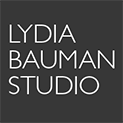Your basket is currently empty!
Methods and Techniques
My technique evolved from my interest in the appearance of old peeling walls, glazed tiles and pottery, and the ancient techniques of fresco (painting into wet plaster) and encaustic (painting with melted wax)
The paintings are executed entirely in the studio, on the basis of photographs taken on my travels, or found in other sources.
I look for motifs where land predominates over sky (hence hillsides, aerial views, banks of trees etc) and is marked by pronounced geometry ( patterns of ploughed or planted fields, regular repetition of motifs such as trees) or by a single central motif (solitary house or tree etc) which offsets its almost abstract surroundings.
I prefer to suggest space, not by traditional linear perspective, but by stacking up flat planes of foreground, middle ground and background, in order to accentuate the surface of the painting on which the adventure of my mark-making can take place.
I work on sheets of 1/4in MDF (medium density fibreboard – or masonite) – favourite dimensions 4’x4′ – which is primed on all sides.
The easel stage is the one where I draw in the motif in charcoal (simplifying and imposing order on my photograph ) and block in the shadow areas with graphite grey acrylic.
Subsequent stages take place with the panel laid flat on a large working table.
Plaster mixed with pigments is applied in successive layers Resin is used in places to build texture, add sheen, or hold sand and grit. Acrylic texture gels (matt or gloss, heavy or light) are used to create directional striations to suggest shapes of fields or hills. Beeswax is melted and painted on to achieve transluscent effects, or scored and filled with plaster to suggest the tracery of branches.
Mica particles, or black volcanic sand are used to suggest the glimmer of light in shadows. Interference colours (metallic or irridiscent gels) convey aerial perpective and the luminosity of distant horizons. Sand of different colours collected from trips to far-flung corners of the world , is applied in direct reference to the landscape it came from.
I invariably leave an irregular white margin around the image , along which all successive layers of the different media can be detected.
